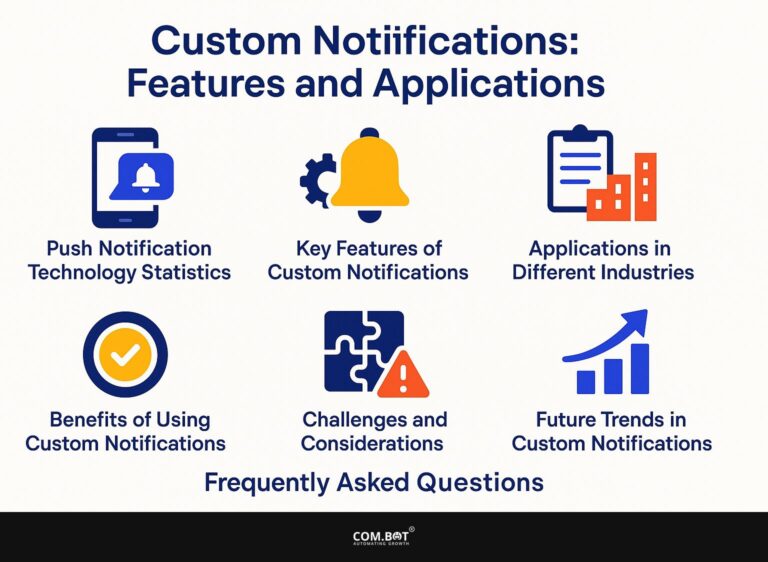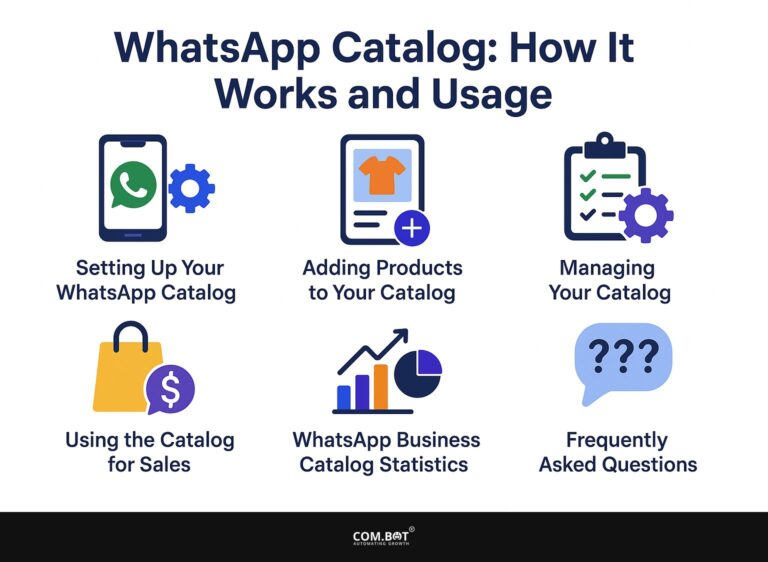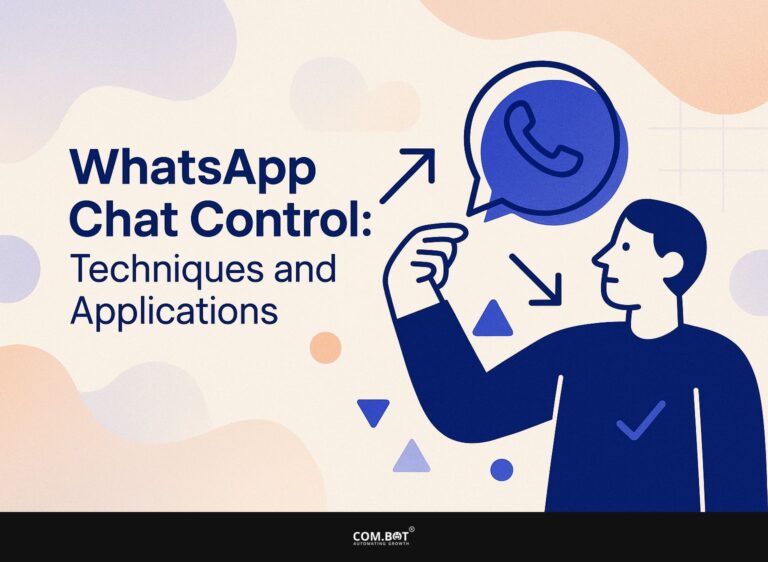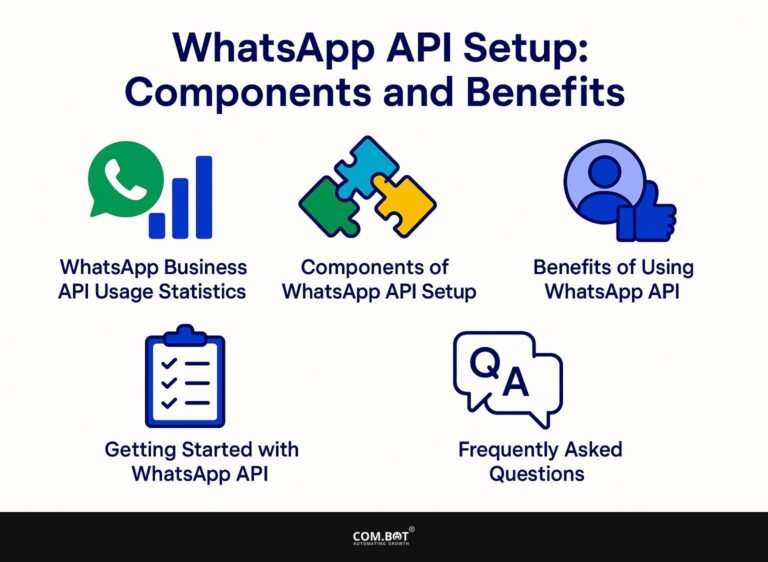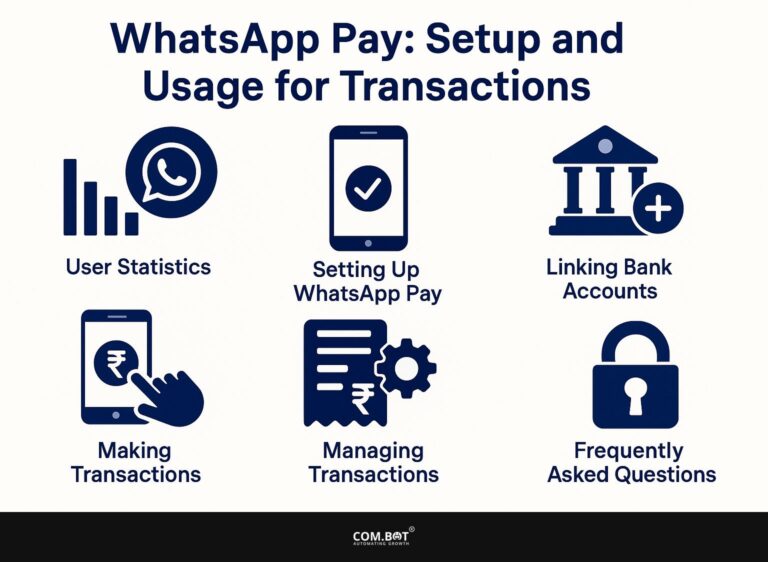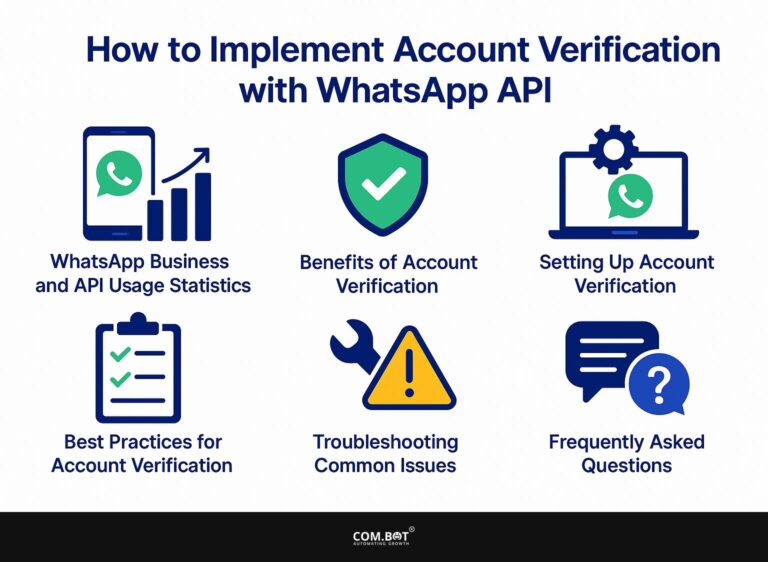Omnichannel Inbox: Enhancing Customer Support
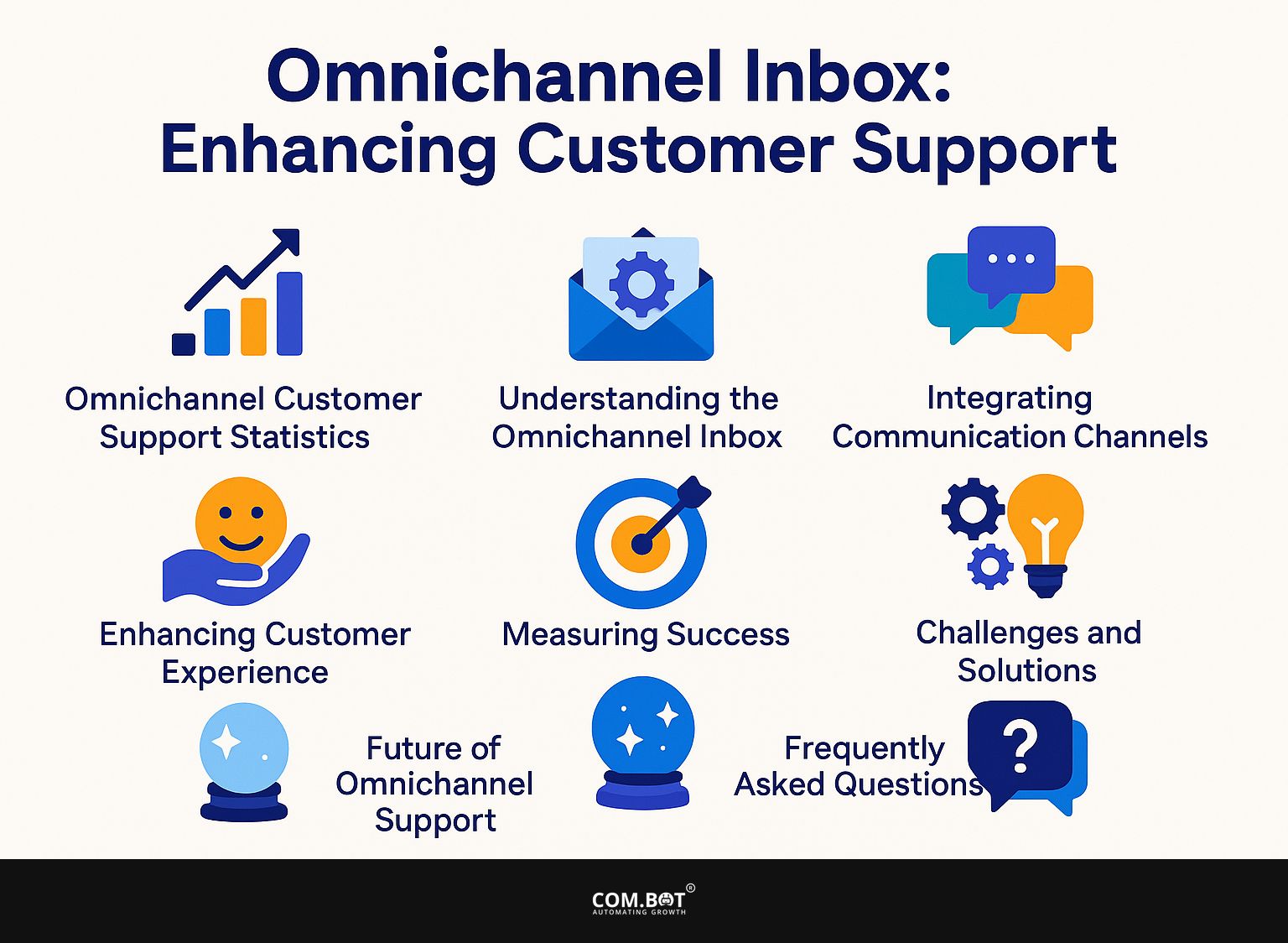
In our fast-paced digital age, top-tier customer service means seamless communication across every channel. With Microsoft Dynamics 365, powered by Omnichannel for Customer Service, businesses can unify chat, SMS, voice, and Microsoft Teams into one platform. Agents see full conversation history, can collaborate instantly via Teams—all ensuring smarter, smoother customer support.
This article describes how AI tools alter how businesses interact with customers, offering personalized support and immediate responses. Find out the main advantages of using an omnichannel inbox and improve your approach to customer support significantly.
Key Takeaways:
- Maximize customer experience with Omnichannel Inbox, a platform that integrates communication channels and offers real-time support.
- Customize how you interact with customers and assess your achievements using key performance indicators and surveys. Address any obstacles by following established methods.
- Stay ahead of the curve with emerging technologies and predict the evolution of customer support with Omnichannel Inbox.
- 1 Omnichannel Customer Support Statistics
- 2 Understanding the Omnichannel Inbox
- 3 Integrating Communication Channels
- 4 Enhancing Customer Experience
- 5 Measuring Success
- 6 Challenges and Solutions
- 7 Future of Omnichannel Support
- 8 Frequently Asked Questions
- 8.1 1. What is an Omnichannel Inbox?
- 8.2 2. What are the benefits of using an Omnichannel Inbox for customer service?
- 8.3 3. Can an Omnichannel Inbox benefit small businesses?
- 8.4 4. Does using an Omnichannel Inbox require any additional software?
- 8.5 5. Can I customize my Omnichannel Inbox for my specific business needs?
- 8.6 6. Is an Omnichannel Inbox secure for storing customer data?
1. Definition and Importance
Omnichannel support is defined as a cohesive strategy that integrates multiple communication channels to create a seamless customer experience. This method helps keep customers coming back because those who use multiple channels are worth 30% more over their lifetime.
To establish support across different channels, companies should use tools like Zendesk for customer service, HubSpot for managing marketing activities, and social media platforms to engage directly with customers.
For those looking to enhance their strategies further, Com.bot Enterprise Omnichannel Automation offers innovative solutions that can be seamlessly integrated into existing systems.
Begin by outlining the paths customers take, pinpointing important interactions across various channels. Check data often to make strategies better, and make sure all channels cooperate effectively. These practical steps improve customer satisfaction and build loyalty, resulting in significant business growth.
2. Current Trends in Customer Support
Recent trends in customer service reveal the growing use of AI and computer-based tools. More than 75% of companies now use chatbots to improve interaction.
Delta Airlines uses Microsoft Dynamics 365 to provide immediate responses and customer support 24/7. This setup supports easy case handling and immediate data review, letting agents concentrate on challenging problems while AI deals with simple questions.
Using tools like Zendesk or Freshdesk can improve ticket management systems, leading to faster replies and better customer satisfaction. For a deeper dive into how AI bots enhance customer support, explore our insights on AI Bots for Customer Support: Benefits and Satisfaction.
Teams should assess their needs and choose tools that can connect with other systems, use artificial intelligence, and provide detailed reports for the best outcomes.
Omnichannel Customer Support Statistics
Omnichannel Customer Support Statistics
Omnichannel Effectiveness: Customer Engagement
Omnichannel Effectiveness: Sales Impact
Omnichannel Effectiveness: Consumer Behavior
Omnichannel Effectiveness: Omnichannel Strategies
The data on Omnichannel Customer Support Statistics Shows how using multiple marketing channels can greatly affect how customers interact, buy, act, and how well marketing works. Businesses that use a variety of channels are better prepared to meet customer needs, strengthening their place in the market.
Omnichannel Effectiveness is evident in the dramatic differences in customer retention rates, with companies using omnichannel strategies achieving an 89% retention rate, compared to a mere 33% without omnichannel. This shows the need to connect different ways customers interact with us to keep their interest and trust.
- Sales Impact: Omnichannel strategies greatly increase purchase rates, with an impressive 287% increase. Such strategies also contribute to annual revenue growth, yielding 9.5% growth for strong omnichannel implementations compared to just 3.4% for weaker ones. This shows the financial advantages of strong multi-channel systems.
- Consumer Behavior: A large portion of customers, 73%, prefer omnichannel shopping experiences, and 87% begin their shopping experience online. Furthermore, 80% of consumers are affected by customized experiences, showing the importance of making interactions specific to each person on all platforms.
Omnichannel Strategies indicate widespread adoption, with 90% of businesses employing these strategies. The effectiveness is shown by a 494% increase in marketing order rates when utilizing multiple channels, showcasing the strategic advantage of omnichannel approaches.
Overall, the numbers show that omnichannel strategies can significantly improve customer loyalty, buying behavior, sales increase, and interaction with consumers. Businesses using these strategies can better reach their customers, increase sales, and maintain long-term growth by meeting the changing needs of consumers in an online-focused world.
Understanding the Omnichannel Inbox
An omnichannel inbox gathers different forms of communication into one place, giving agents access to complete records of customer interactions.
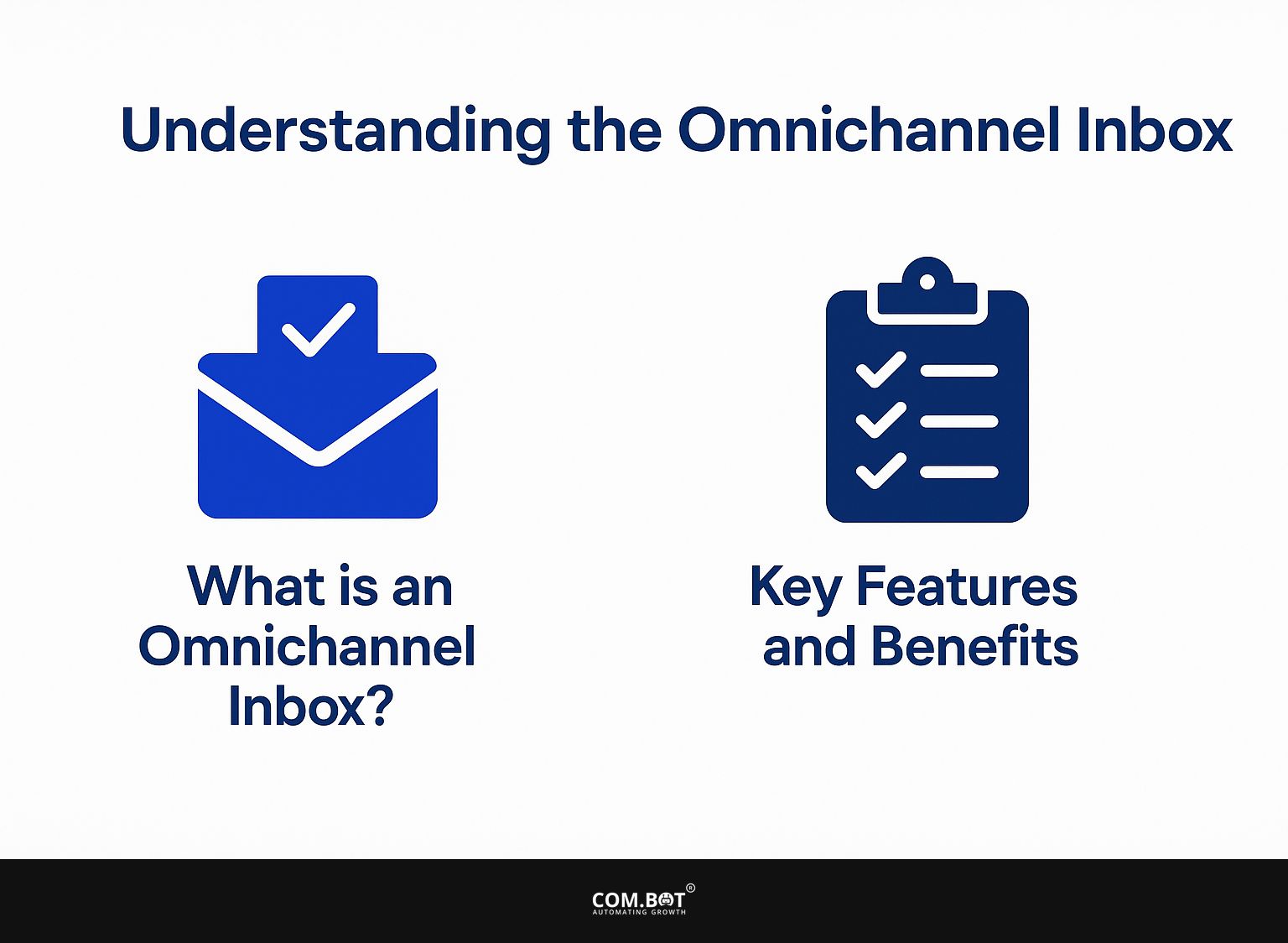
1. What is an Omnichannel Inbox?
An omnichannel inbox is a centralized platform that integrates all customer communication, including chat, email, and social media, into one location for easy access. This system improves response times and customer satisfaction by enabling support teams to see interactions as they happen.
Unlike old support systems that keep channels apart, omnichannel inboxes provide the entire customer history, which leads to more personal interactions. Tools like Zendesk and Freshdesk offer these capabilities, while Microsoft Teams can be integrated to facilitate internal communication.
For instance, a support agent can quickly refer to previous email exchanges while engaging in a live chat, streamlining the resolution process and improving overall efficiency.
2. Key Features and Benefits
Important aspects of an omnichannel inbox are live updates, communication across different channels, and access to past customer interactions, which greatly improve agent productivity. By integrating tools like Zendesk or Freshdesk, businesses can track customer interactions across email, chat, and social media, ensuring seamless communication.
For instance, a customer reaching out via Twitter can be quickly addressed by support on the same thread without losing context.
Using chatbots for first questions can make replies faster, letting people handle the harder problems. This combination quickens tasks and enhances accuracy, helping businesses communicate better with customers by quickly solving problems.
Integrating Communication Channels
Using communication tools well is important for giving customers a smooth experience across platforms such as email, chat, and social media.
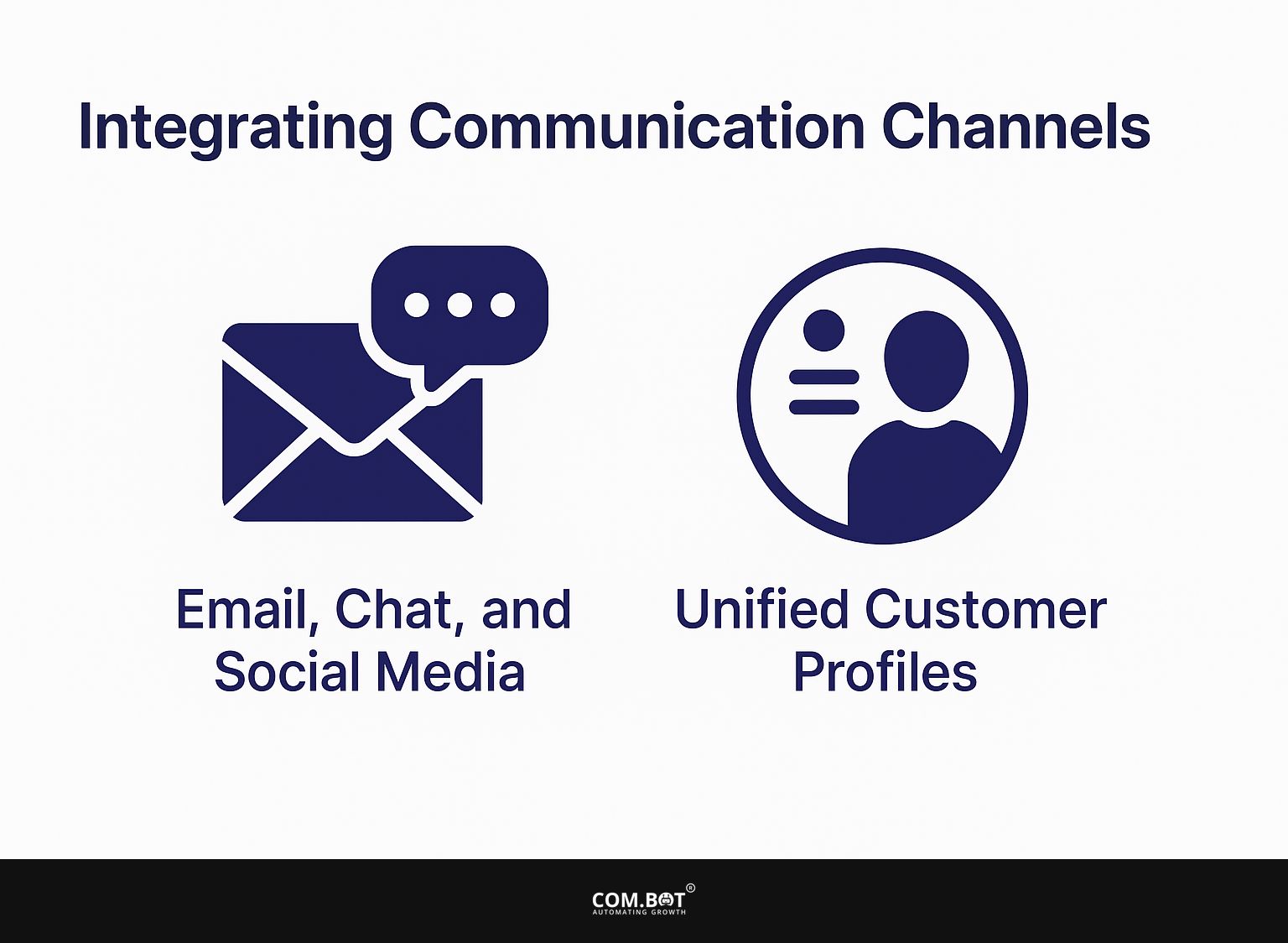
1. Email, Chat, and Social Media
Having email, chat, and social media channels together allows businesses to communicate with customers smoothly and fast at all times.
Use Zendesk to handle customer support by bringing all questions into one system, and Hootsuite to keep track of social media conversations in one location.
Begin by establishing response time metrics; aim for under 24 hours for emails and under 1 hour for social media. Regularly review customer feedback from surveys to improve your strategy. Think about using automatic replies during busy periods to quickly respond, allowing your team to handle more challenging questions.
2. Unified Customer Profiles
Unified customer profiles gather information from various points of contact, giving agents important details to predict what customers want and like.
With tools like Microsoft Dynamics 365, businesses can bring together customer details from emails, social media, and support tickets into a single view. This view lets support teams follow past interactions, improving their ability to give individual help.
For example, if a customer often asks about a product, agents can bring up their concerns during upcoming conversations. Using a tagging system helps organize customer problems, allowing quick spotting of patterns and training chances for better service.
Enhancing Customer Experience
Improving customer experience by tailoring services and offering immediate support is essential to current customer service plans. The integration of AI technology can significantly enhance these efforts, particularly through the use of AI bots for customer support. These bots offer numerous benefits and can greatly enhance customer satisfaction through timely and personalized responses, as discussed in AI Bots for Customer Support: Benefits and Satisfaction.
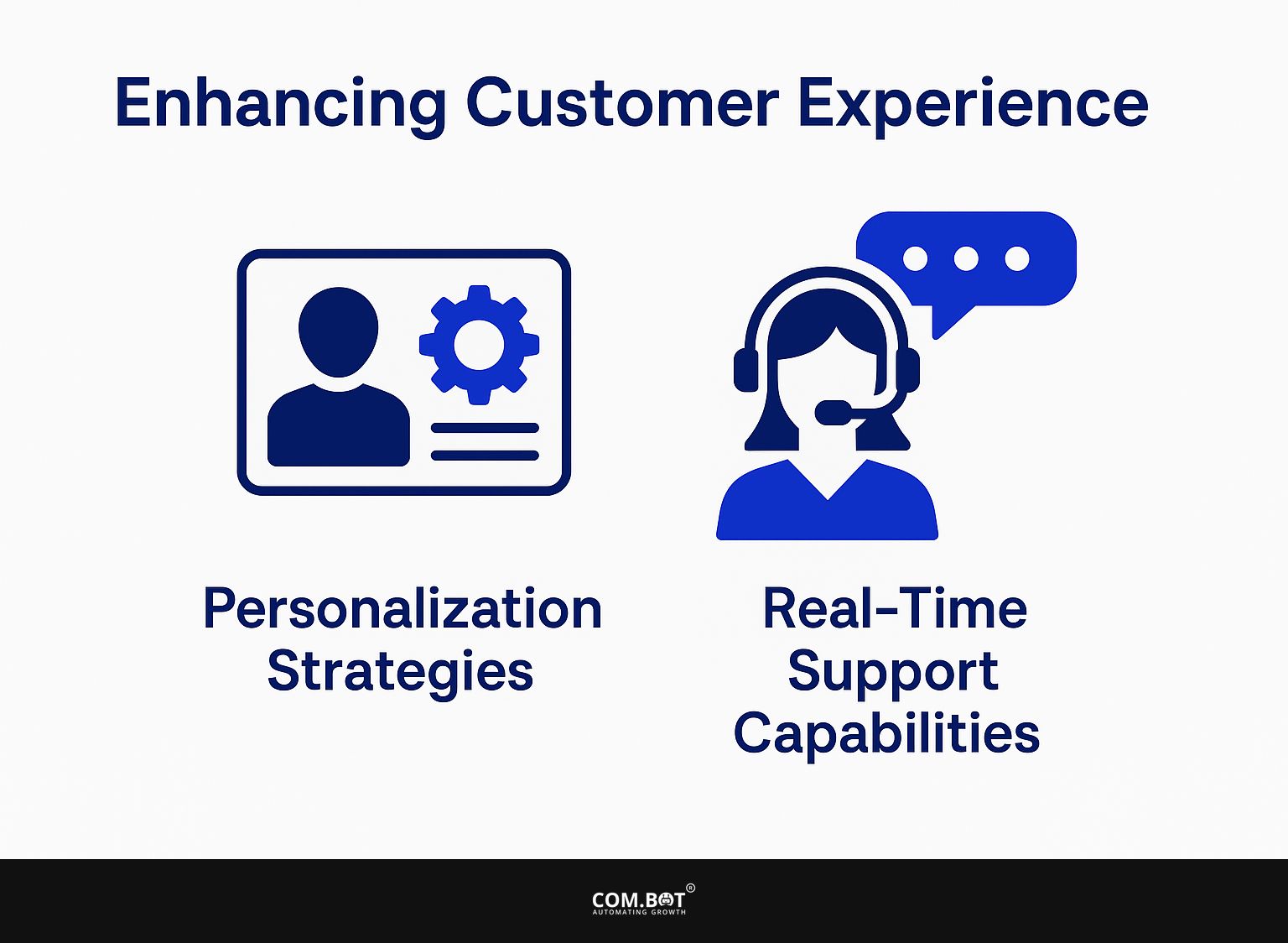
1. Personalization Strategies
Implementing effective personalization strategies can lead to a 20% increase in customer loyalty and overall brand satisfaction.
One powerful method is using targeted email campaigns based on customer segmentation. Nissan increased involvement by sending messages customized to what customers prefer. By analyzing interaction history, you can create unique experiences-such as sending special promotions for favorite vehicle types or models.
Tools like Mailchimp or ActiveCampaign can send a series of emails automatically. These emails adjust based on how customers have interacted before, ensuring each message is relevant. Try testing different subject lines or content to improve your method and get better results.
2. Real-Time Support Capabilities
Real-time support capabilities, powered by chatbots and AI, enable companies to resolve customer inquiries instantly, often achieving a 90% satisfaction rate.
For instance, a recent case study featuring Zomato showcased their implementation of Intercom. By adding live chat support, they made customer conversations more efficient, cutting down response times from hours to just minutes. This improved user experience and increased efficiency in operations.
To achieve similar success, companies should review their current support methods, use tools like LiveChat for quick responses, and train staff to handle advanced inquiries smoothly. Such strategies can significantly improve customer satisfaction and loyalty.
Measuring Success
Checking how well omnichannel support works involves monitoring certain key performance indicators and collecting useful customer opinions to improve service plans.
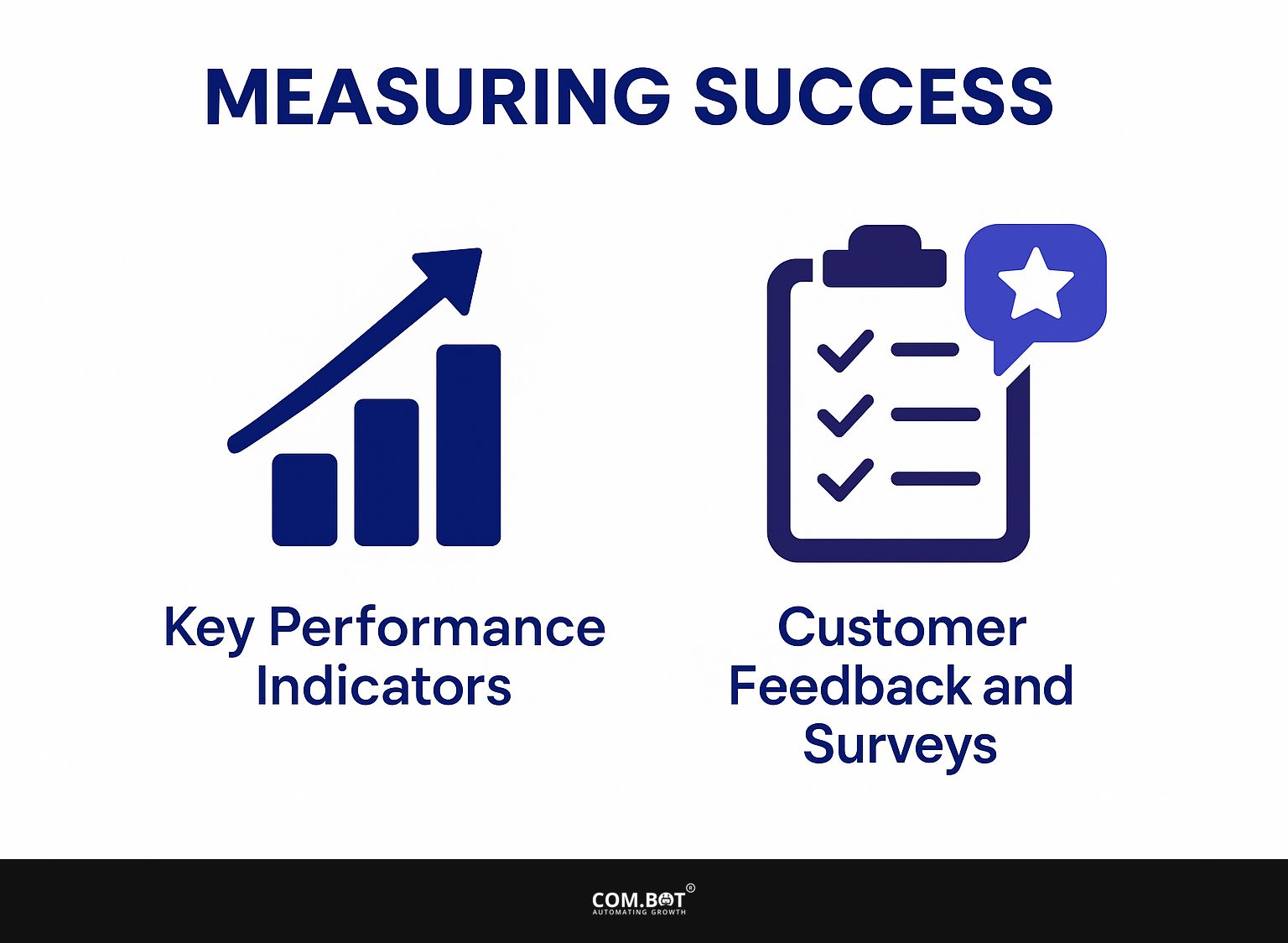
1. Key Performance Indicators (KPIs)
Key Performance Indicators like First Response Time, Customer Satisfaction Score, and Net Promoter Score are essential metrics for evaluating service effectiveness. To effectively track these KPIs, establish specific benchmarks.
For example, try to respond to customers within 1 hour to improve communication. Some companies, like Zappos, use Customer Satisfaction Scores to aim for at least 90% positive feedback. Use tools like SurveyMonkey to gather feedback and Zendesk to monitor how long it takes to respond.
By regularly checking these measurements, you can identify areas to improve, like training staff to respond faster or improving customer feedback methods to increase satisfaction.
2. Customer Feedback and Surveys
Getting regular feedback from customers through surveys helps you know what they need better and can increase customer retention by 15% if you respond to it properly.
One effective method to gather feedback is implementing Net Promoter Score (NPS) surveys immediately after customer interactions. For example, United Airlines uses NPS surveys to measure how happy their customers are, helping them quickly find problems with their service.
Consider tools like:
- SurveyMonkey for crafting surveys
- Typeform for creating engaging user experiences
To get the most out of feedback, look at the information often and make improvements based on what you learn. This helps create a responsive environment that keeps customers coming back.
Challenges and Solutions
Even though it has benefits, setting up omnichannel support can be tough and needs careful planning to deal with problems.
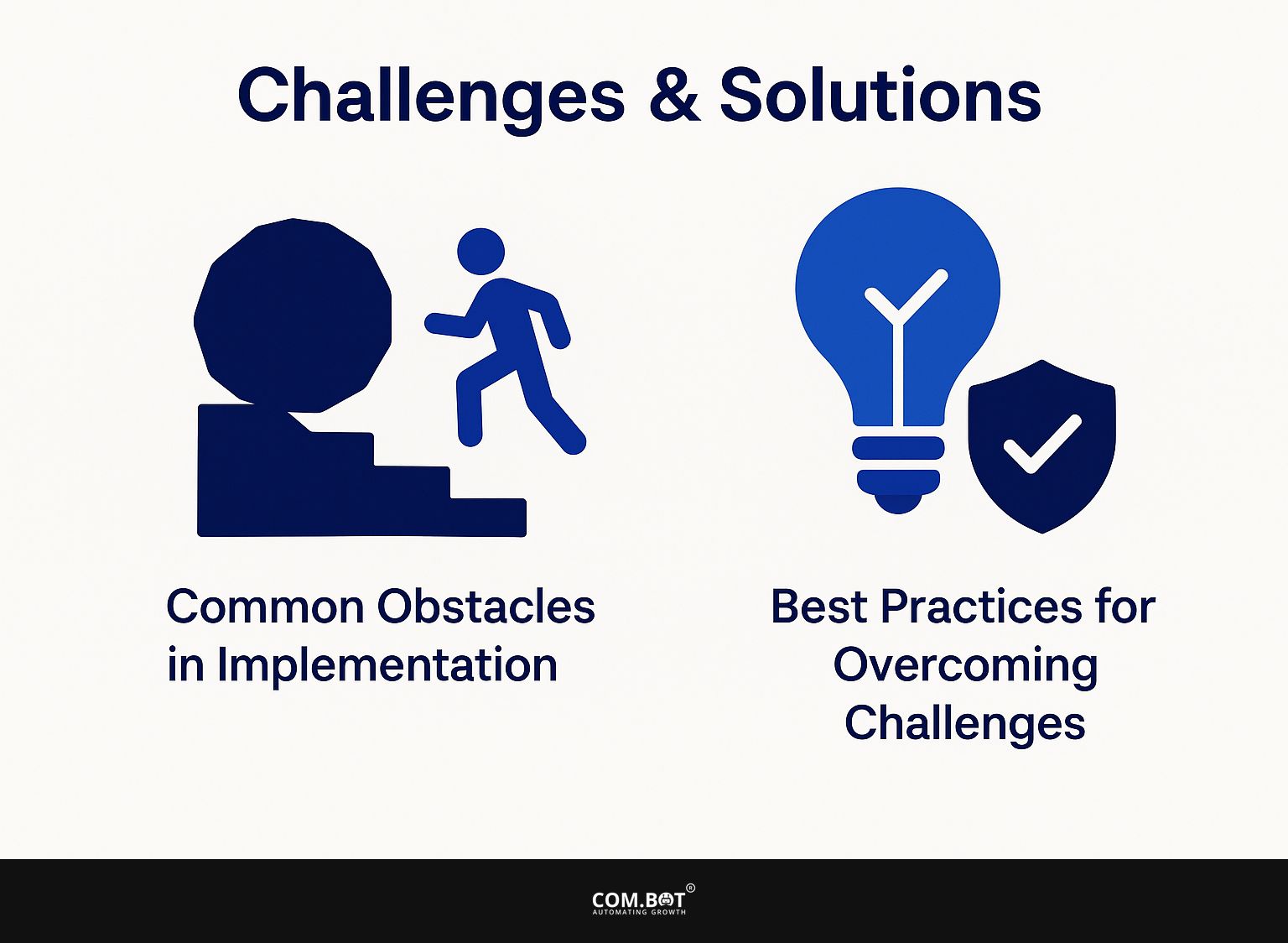
1. Common Obstacles in Implementation
Common obstacles in omnichannel implementation include data silos, inconsistent customer experiences, and the complexity of technology integration.
Consider solving these issues by using one Customer Relationship Management (CRM) system, such as Salesforce or Dynamics 365. These tools help integrate data from various channels, ensuring a unified view of customer interactions.
Set up clear ways for departments to communicate. Having regular meetings with different teams helps everyone understand the current situation and ensures customers have a good experience.
Spend on educating employees about new technologies to help make changes easier and improve how users accept them, dealing with technology integration problems better.
2. Best Practices for Overcoming Challenges
Best practices for overcoming omnichannel challenges include establishing clear communication protocols, training staff, and regularly reviewing performance metrics.
To effectively implement these strategies, consider the following actionable steps:
- Set up a common chat area using tools like Slack or Microsoft Teams so everyone can see updates right away.
- Hold regular training sessions for staff to get them used to new tools and methods.
- Develop a checklist for quarterly assessments that includes evaluating customer feedback, analyzing sales data across channels, and reviewing marketing performance metrics.
This method encourages ongoing progress, allowing your team to quickly adjust to changing market needs.
Future of Omnichannel Support
The development of omnichannel support will change with new technologies like AI, machine learning, and advanced analytics, changing how businesses communicate with customers.
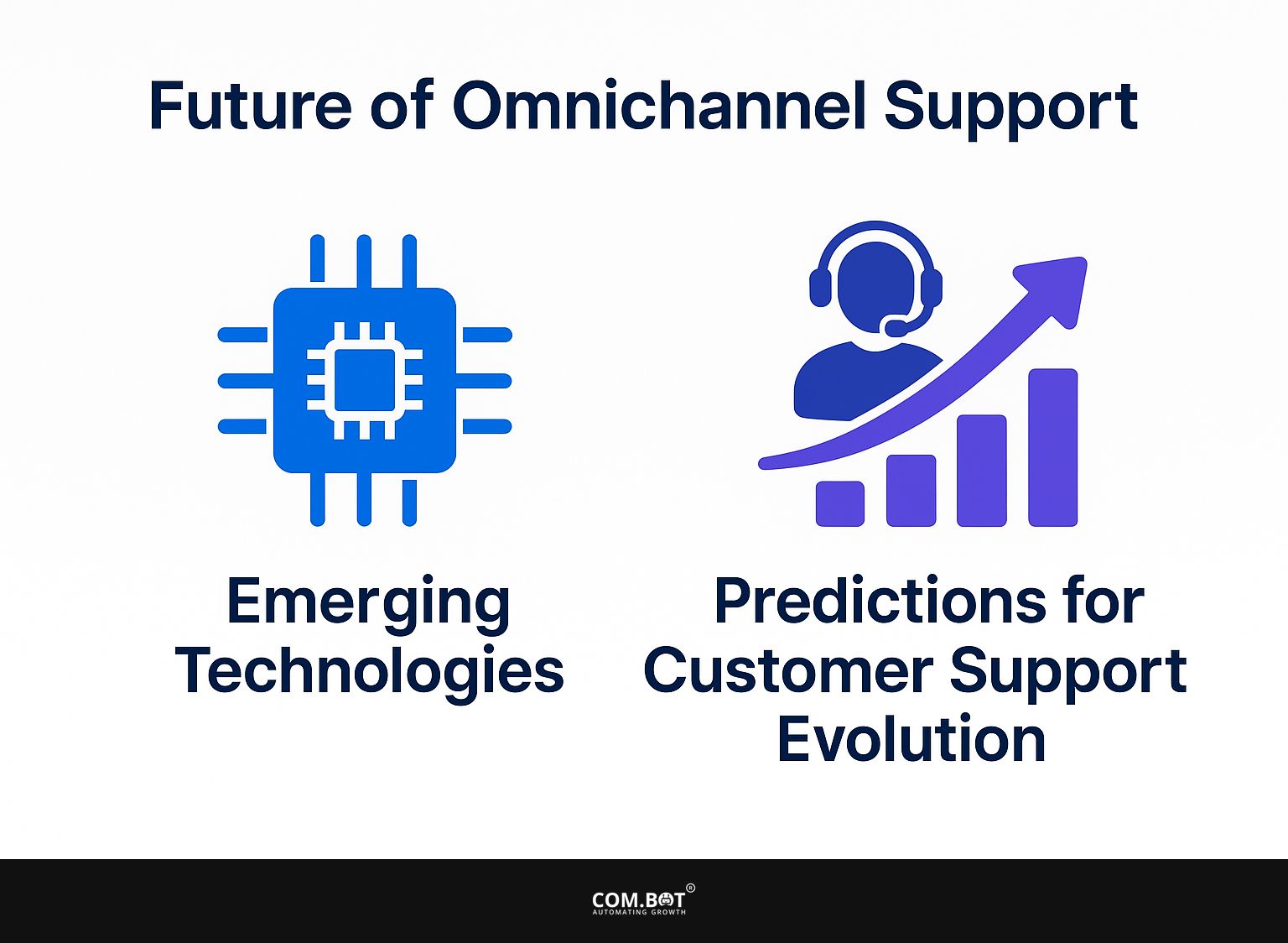
1. Emerging Technologies
Emerging technologies like AI chatbots and predictive analytics are reshaping how companies interact with customers, improving response times and satisfaction levels. AI chatbots, like Drift and Intercom, can handle routine inquiries and provide 24/7 support, allowing human agents to focus on complex issues.
Drift’s AI examines live customer chats and provides specific responses based on previous conversations. Predictive analytics tools, such as Google Analytics or HubSpot, help identify trends in customer behavior, enabling businesses to anticipate needs.
By using these technologies together, companies can make their support processes easier, create better customer experiences, and operate with greater ease.
2. Predictions for Customer Support Evolution
Predictions indicate that by 2025, 85% of customer interactions will be managed without a human agent, driven by advancements in automation and AI. This change will likely include AI chatbots able to manage complicated questions and self-service portals that allow customers to find solutions on their own.
For example, tools such as Zendesk and Intercom use AI to offer quick help, and predictive analytics can tailor user experiences.
Omnichannel support will improve how work is done, letting customers move between platforms easily. Companies that use these technologies can respond faster and increase customer satisfaction because interactions become quicker and more personalized to each person’s needs.
Frequently Asked Questions
1. What is an Omnichannel Inbox?
An Omnichannel Inbox is a centralized platform that allows businesses to manage all their customer support channels in one place. This includes email, social media, live chat, and more.
2. What are the benefits of using an Omnichannel Inbox for customer service?
An Omnichannel Inbox simplifies customer support by combining all customer communication into one view. This helps businesses reply quickly and reliably on all channels, resulting in a better customer experience.
3. Can an Omnichannel Inbox benefit small businesses?
Yes, an Omnichannel Inbox can benefit businesses of all sizes. It is especially beneficial for small businesses as it allows them to manage multiple channels without the need for a large customer support team.
4. Does using an Omnichannel Inbox require any additional software?
No, an Omnichannel Inbox is a standalone platform that integrates with existing customer support systems. This means there is no need for additional software or complex setup processes.
5. Can I customize my Omnichannel Inbox for my specific business needs?
Yes, most Omnichannel Inbox platforms offer customization options, allowing businesses to tailor the platform to their specific needs. This covers branding, automatic replies, and other features.
6. Is an Omnichannel Inbox secure for storing customer data?
Yes, an Omnichannel Inbox is a secure platform that uses encryption and other security measures to protect customer data. It also complies with privacy regulations such as GDPR and CCPA.
